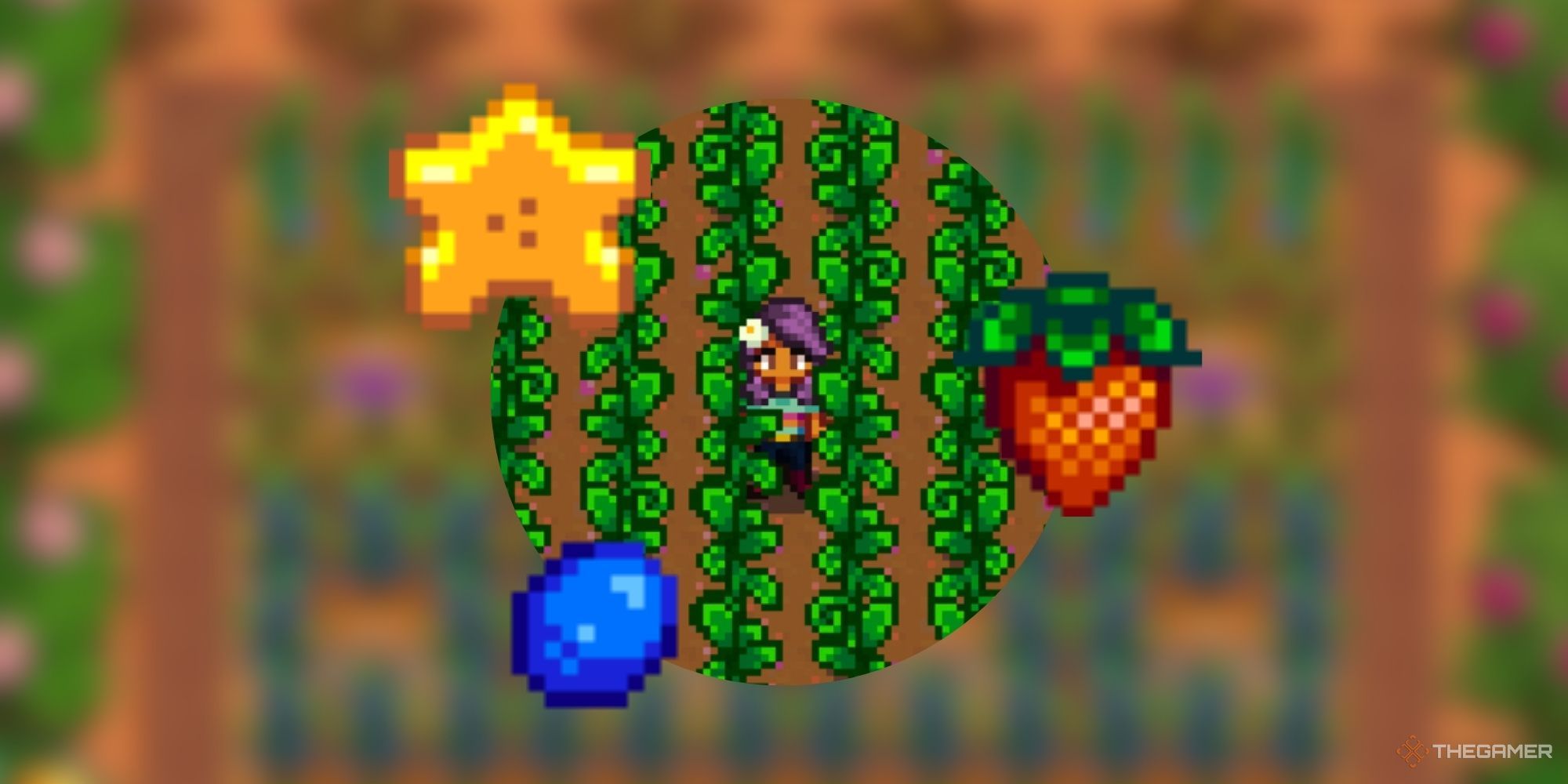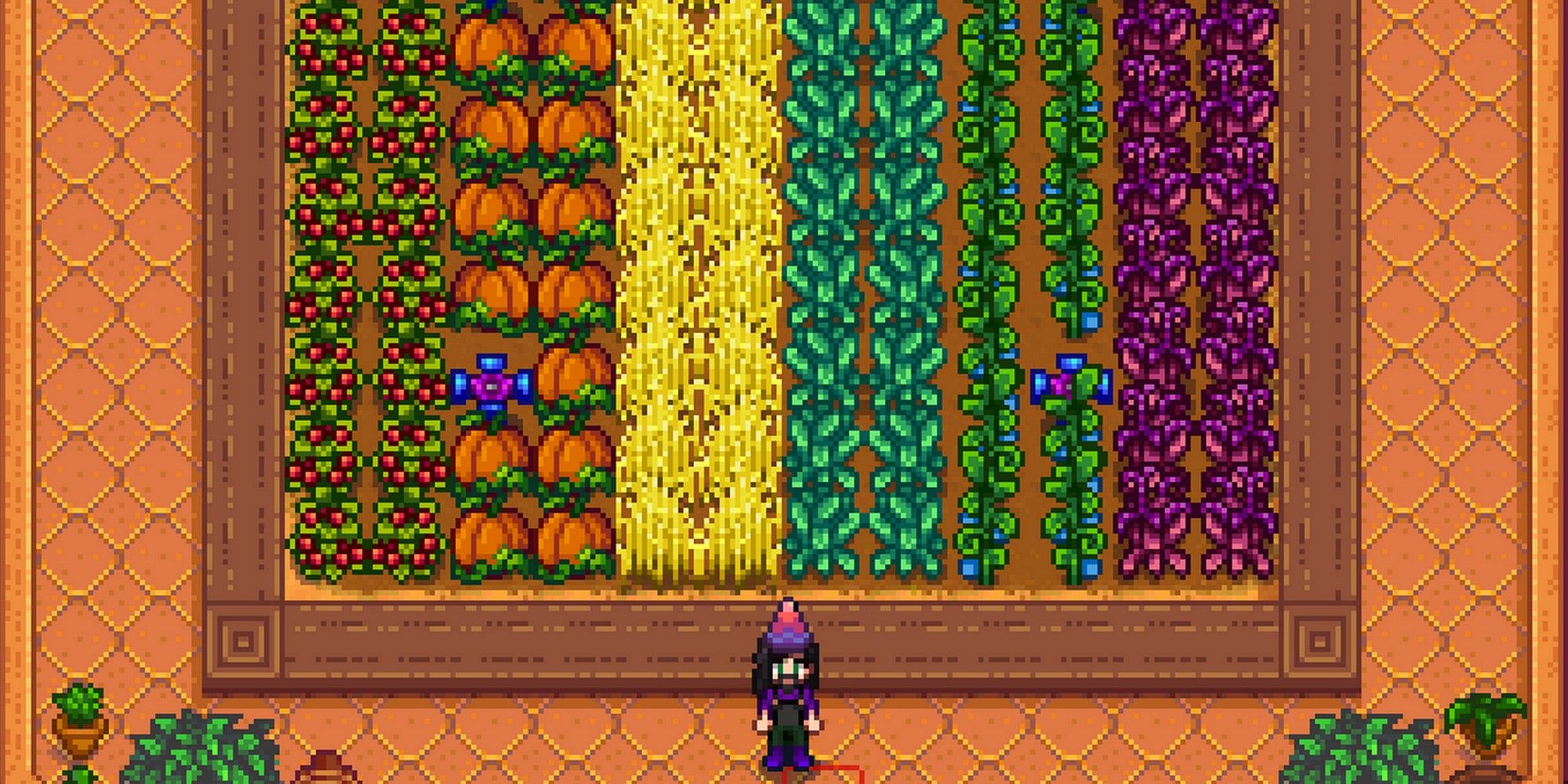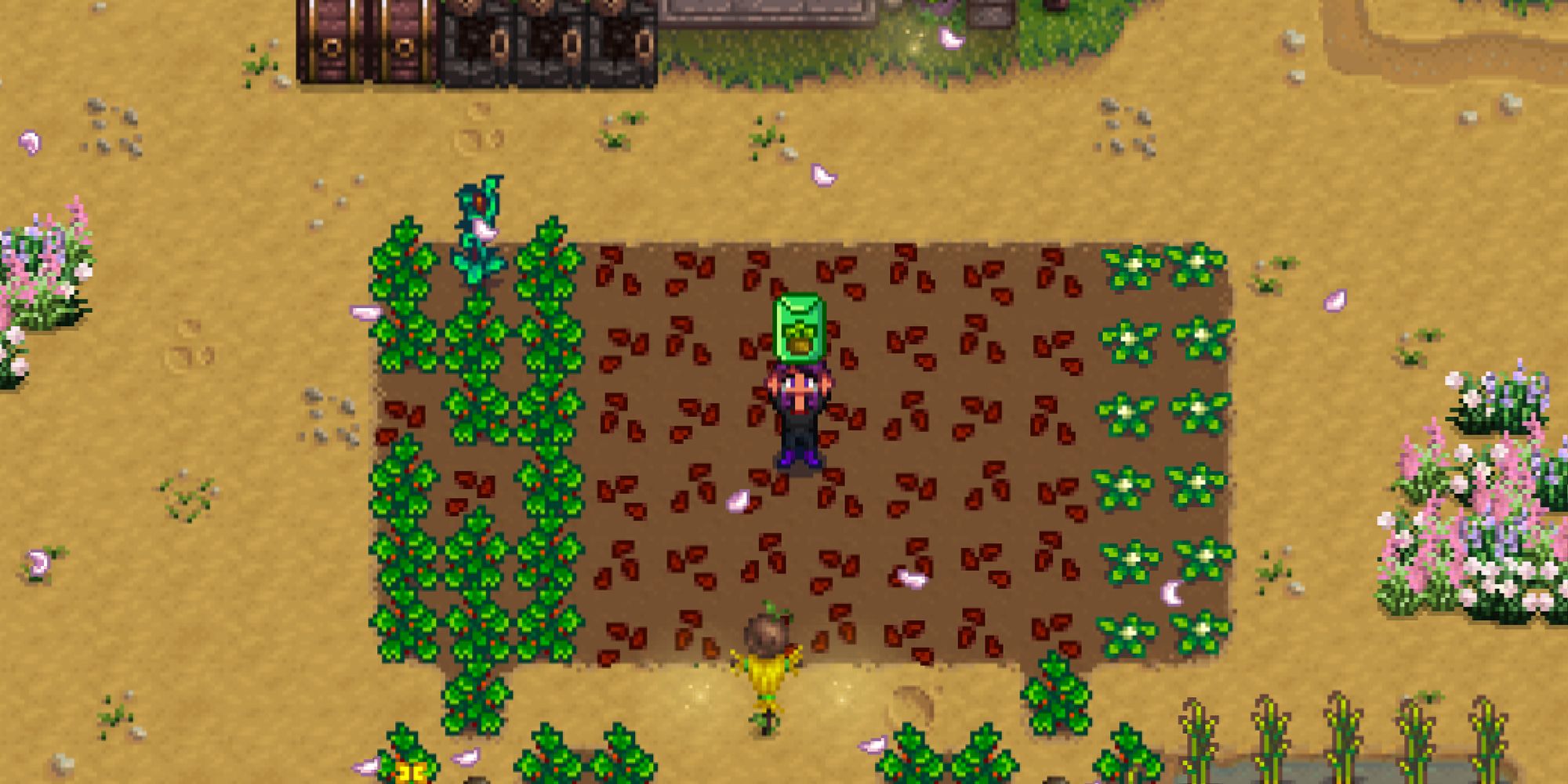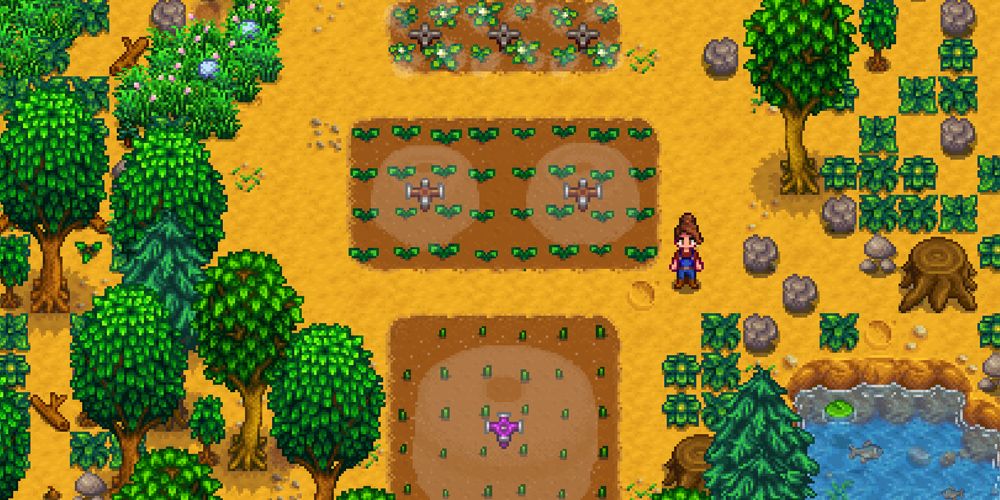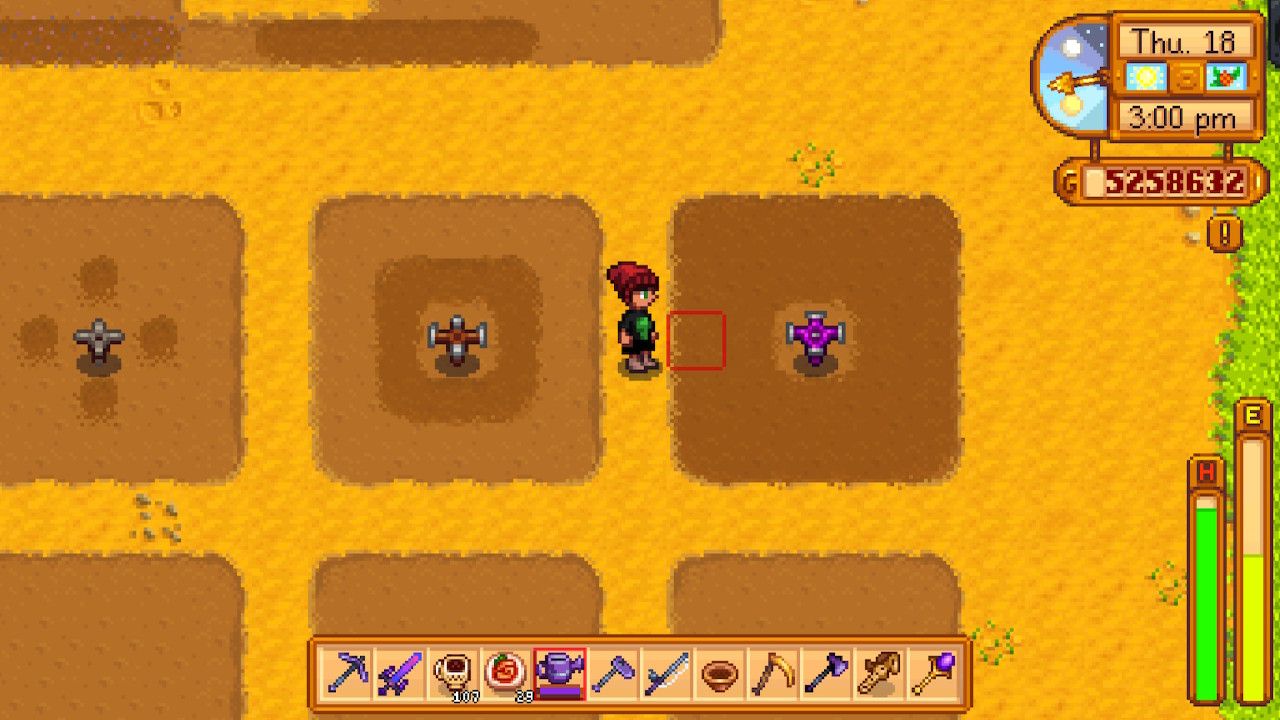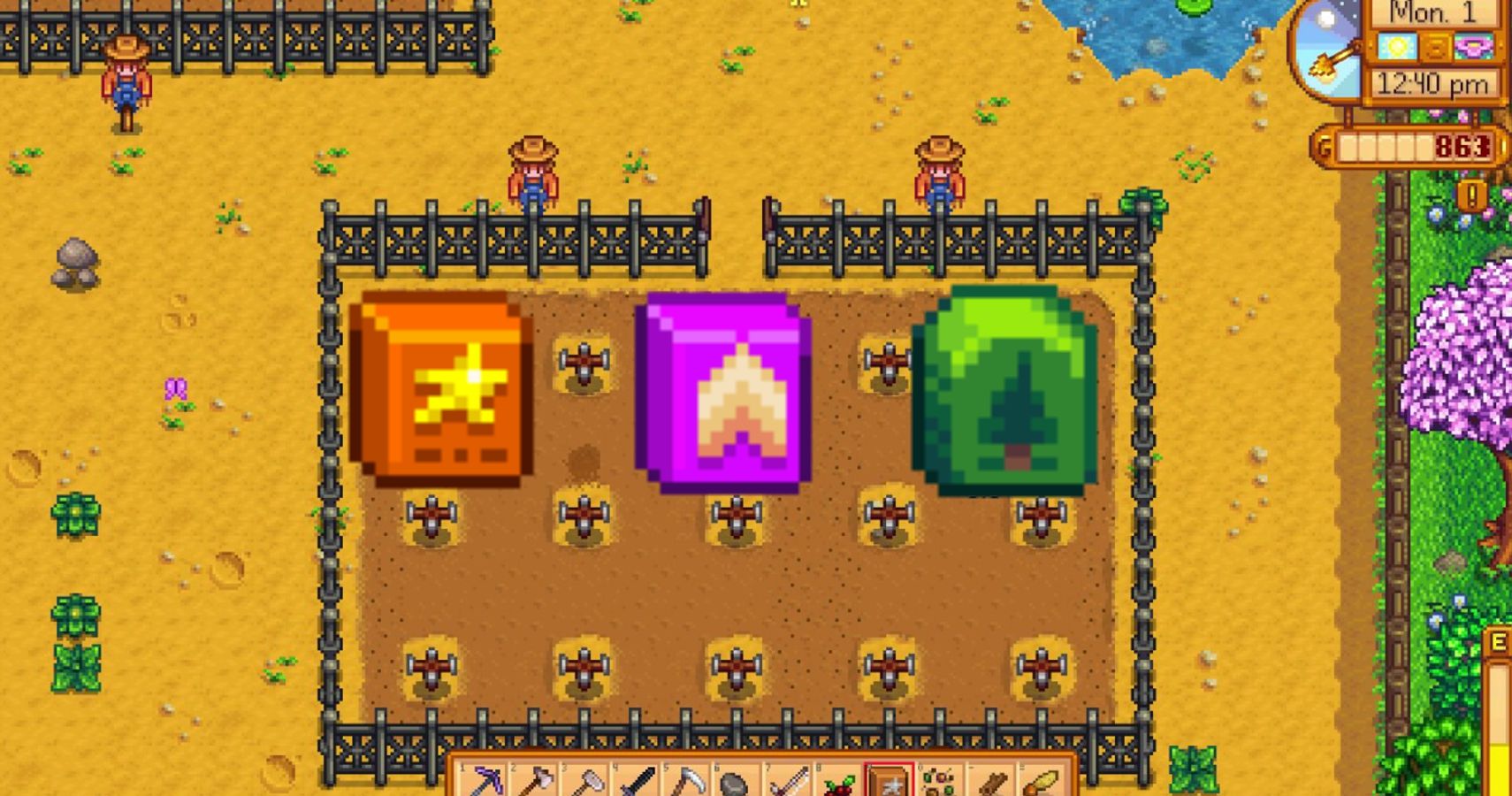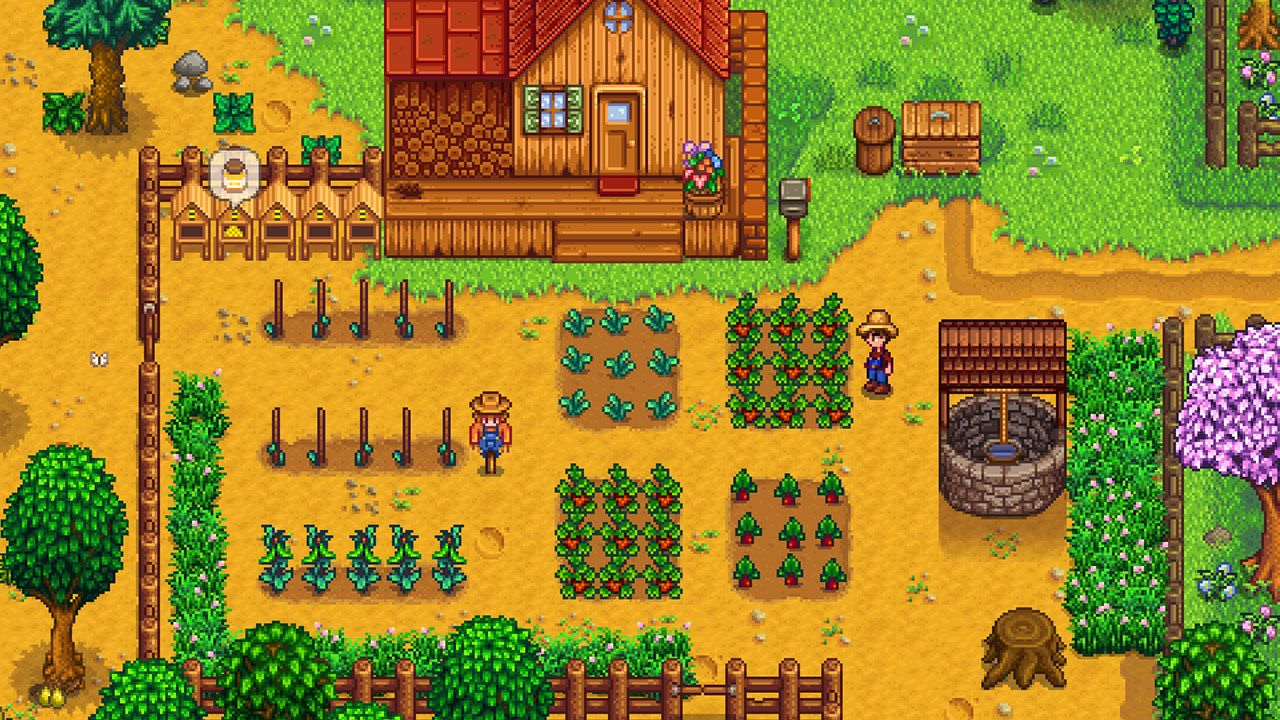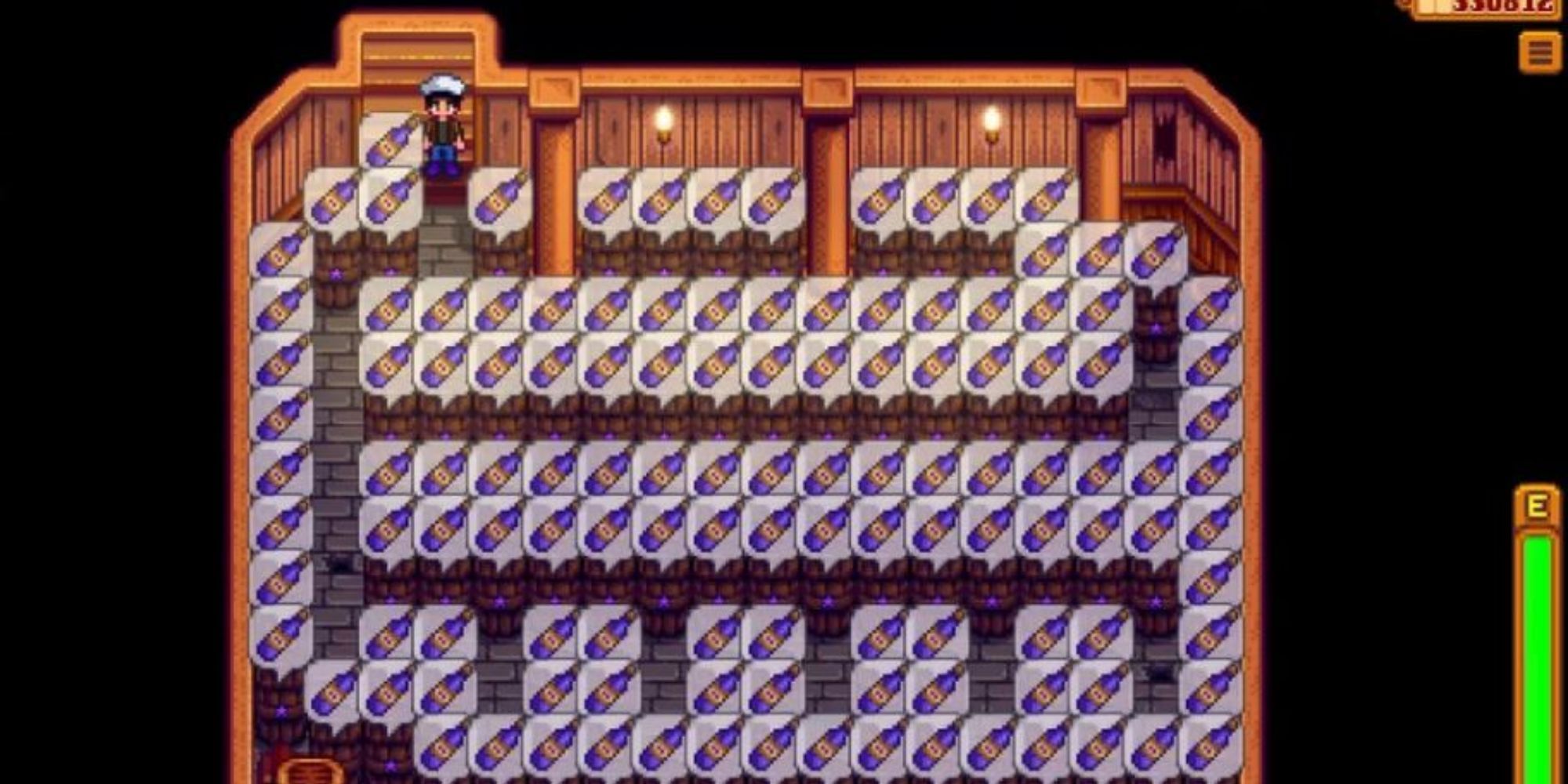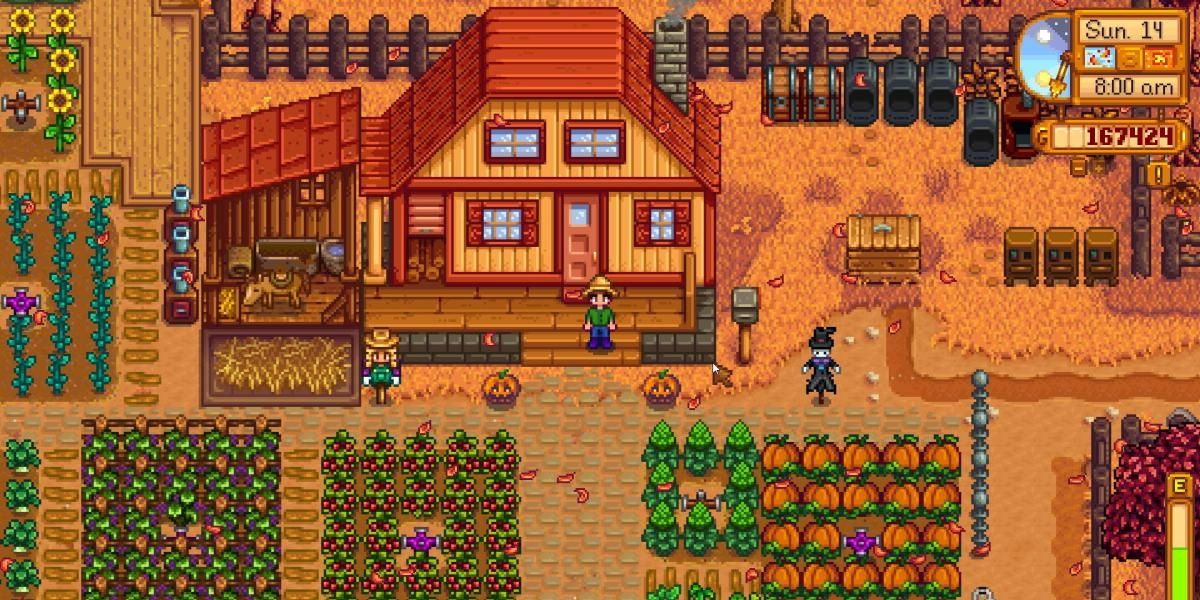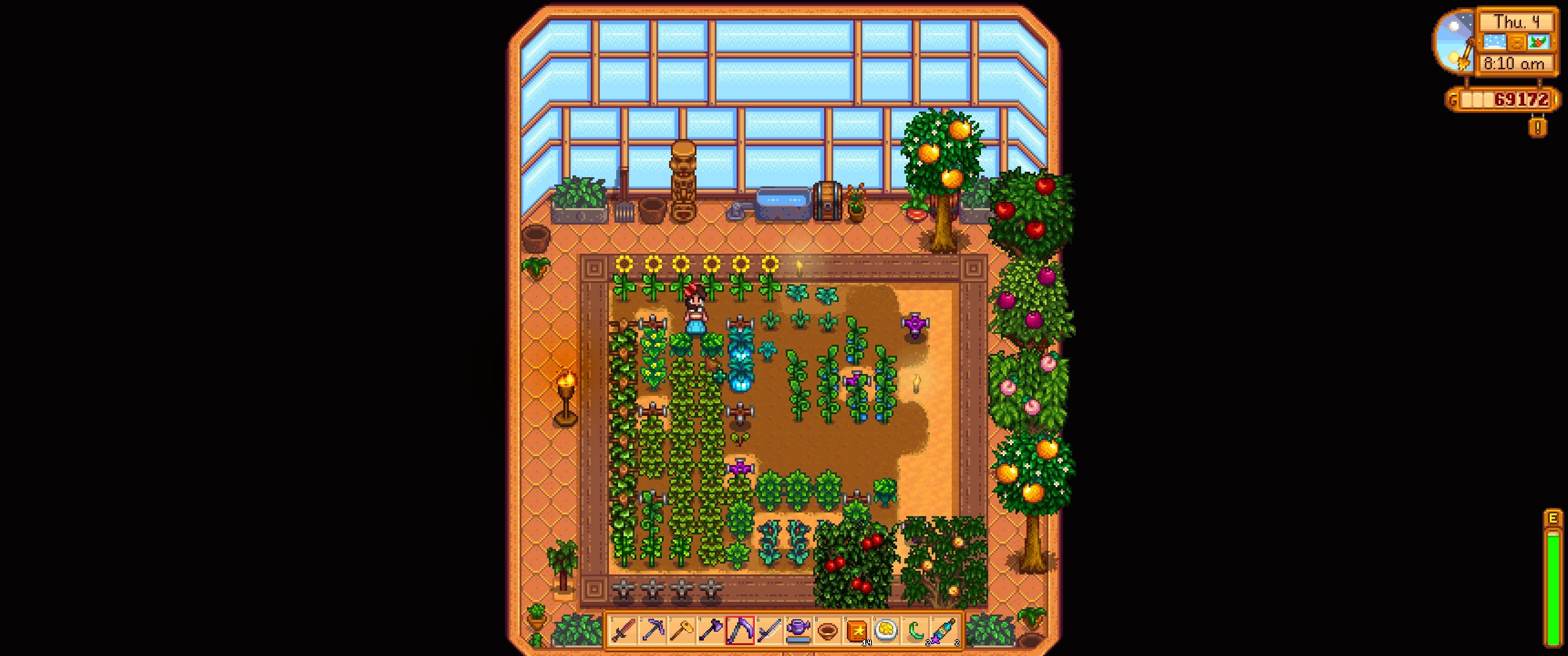Farming and growing different kinds of crops is one of the most central elements of playing Stardew Valley, but with every farming sim game slightly different, it’s always tough to know exactly what to do when you first begin playing a new one.
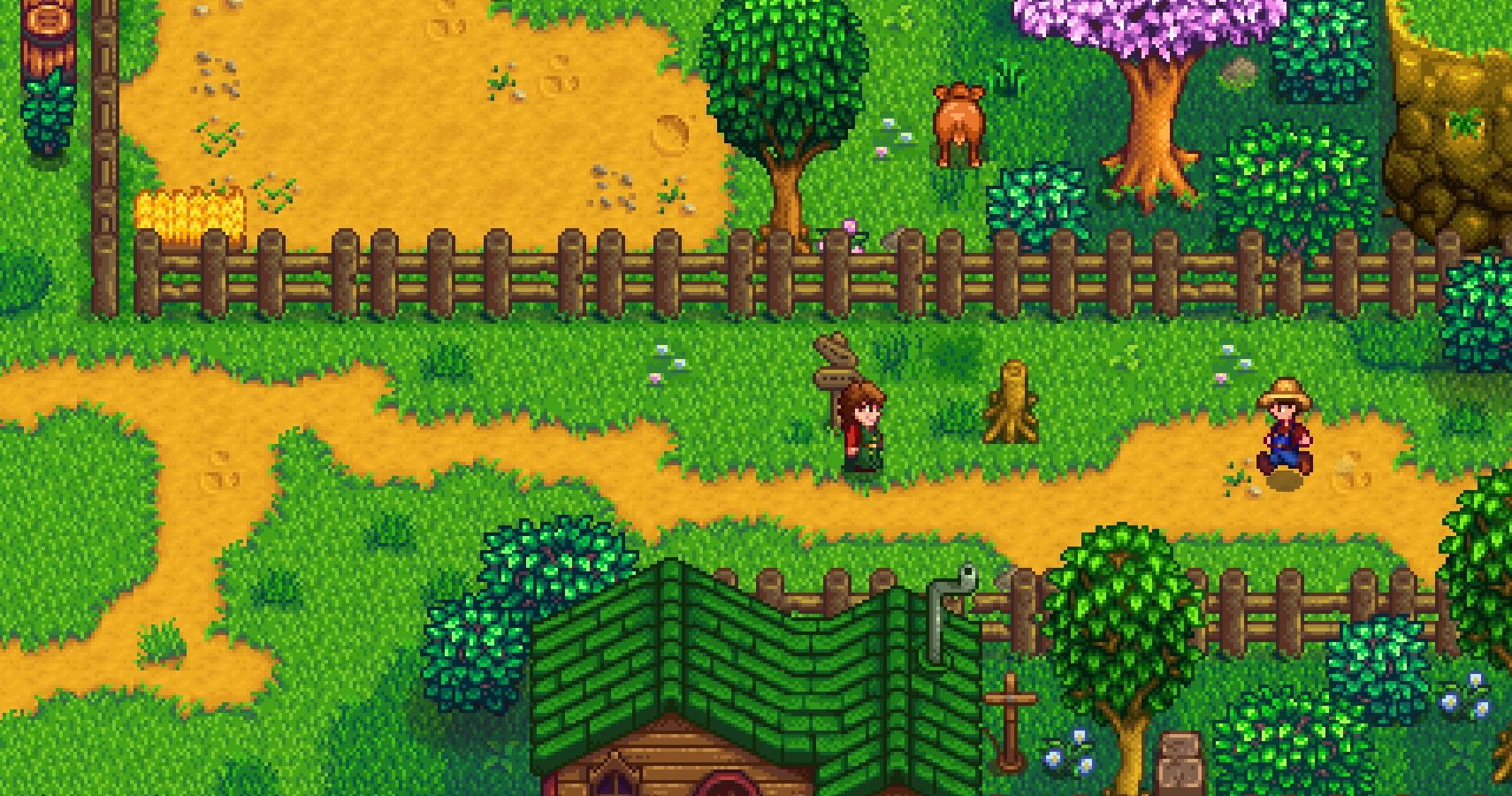
10 Beginner's Tips For Stardew Valley
Cutesy life sim Stardew Valley has a ton of hidden nuances, and here are 10 details of which all beginner players should be aware.In our guide to farming in Stardew Valley, we’re walking you through everything from seed to harvest. We detail how to plant crops, how to use fertilizer, the difference between the three sprinklers, when crops grow throughout the year, and so much more that you’ll need to know to help optimize your farming efforts in Stardew Valley.
Updated on April 7, 2024 by Gabrielle Castania: Now that the version 1.6 update has released for PC, we're updating a number of our Stardew Valley guides to ensure they're in line with the newest content.
Till The Land And Plant Your Seeds
Once you've cleared some land of all the trees and rocks that spawn naturally around the farm, use your hoe to till some dirt to prepare it for your seeds. Better hoes can till more squares at a time, so it's worth it to keep up with your tool upgrades to maximize your efficiency.
When you've got some squares of dirt prepared, select the seed you want to plant from your inventory and place it onto a square of tilled dirt. Most crops cannot grow on untilled land, and the game won't let you place them unless the dirt has been tilled first.
You'll be able to fit one seed per square, and as your farming operation scales up, it may be worth it to begin thinking about your farm layout to maximize your profits once you're into the swing of things!
Doing so will bolster your Farming skill, one of five skills available in the game.
Giant Crops
Melon, Cauliflower, and Pumpkins can turn into giant crops, which burst into far more harvested crops than normal. There's no set way to influence them to grow this way, but they need to be planted in a three-by-three square to be eligible.
Water Crops Daily (Or Install Sprinklers)
In order for crops to grow, you need to water your crops once a day, regardless of what kind of crop they are or where they are in the growth cycle. Use the watering can on your crops, being sure to refill it when it empties to ensure you're hitting everything.
Crops that are ready for harvest do not need to be watered, but doing so does water that square for the day if you're planning to re-plant something immediately afterwards, so it doesn't hurt, either.
It's critical to be sure you do this every day, but do note that rainy days do your watering for you. You don't need to follow up a storm with your watering can, so use the spare time to pursue one of your other skills.
Before long, though, you'll want to automate your watering process, especially as your farming scales up and the number of crops you have planted grows. The best way to do this is by using sprinklers strategically around your fields, which automatically water your crops each morning.
There are three types of sprinklers, each with a different range.
- Sprinklers are the simplest form of the item, and they water one square above, below, left, and right of where the sprinkler was placed.
- Quality Sprinklers water the eight tiles encircling the sprinkler, hitting the corner squares that the lower-level sprinkler misses.
- Iridium Sprinklers are the toughest to get, but they water 24 squares around the sprinkler, expanding a full row above, below, and to each side from the Quality Sprinkler.
You can expand a sprinkler's range by one square in each direction by using a Pressure Nozle from Qi's Walnut Room on Ginger Island.
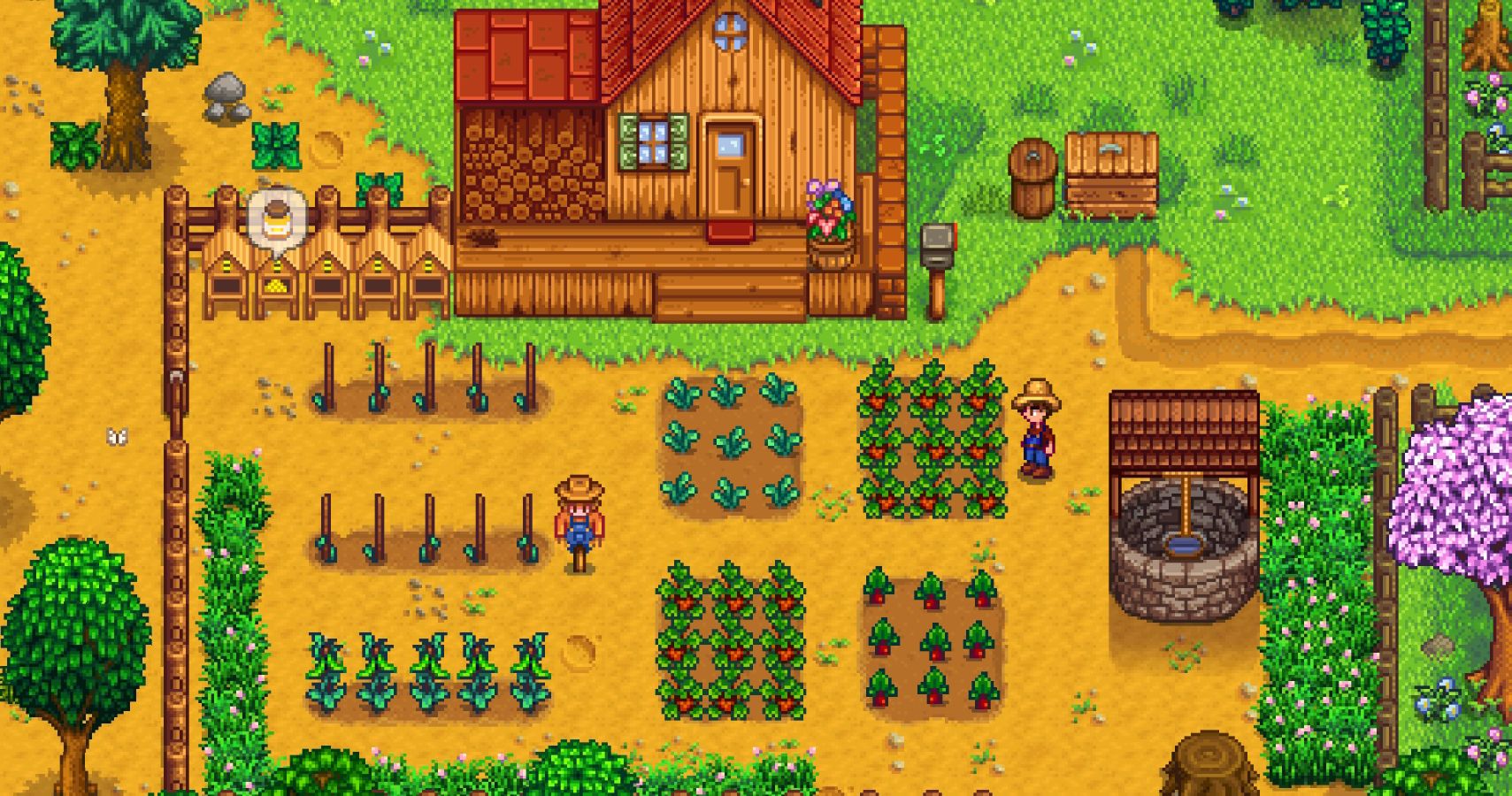
The Best Crops In Stardew Valley, Ranked
Making money in Stardew Valley is vital, and your main source of income will be your crops. Here are the ones to prioritize.Fertilizers Impact Your Crops In Different Ways
Before you plant your seeds into a tilled plot of land, consider using the different kinds of fertilizers in Stardew Valley to enhance your growth in some way. These include:
- Fertilizer boosts your chances to grow better quality produce from that plant.
- Retaining Soil, which has a chance to keep the ground under crops watered overnight, reducing the amount of watering you need to do the following day.
- Speed Grow is able to reduce the growing time by ten percent per crop on which it's planted. (This doesn't speed multi-harvest regrown crops, just the basic plant until it's ready to be harvested for the first time.)
You never have to use fertilizer - crops still grow reliably without them - but they'll always help!
Crops Have Different Growth Times
Just because you planted all your crops on the same day doesn't mean they'll be ready on the same day as one another - just like in real life, different crops require different amounts of growing time before they're mature and ready to harvest.
You'll see your crops go through different growth stages visibly when you check out your fields, watching them grow from the seeds you planted into fully-grown produce. Harvest as soon as they're ready to maximize your season!
How Long Does Each Crop Take To Grow In Stardew Valley?
|
Special Crops |
|||||||
|---|---|---|---|---|---|---|---|
|
Crop |
Days |
Crop |
Days |
Crop |
Days |
Crop |
Days |
|
Blue Jazz |
7 |
Blueberry * |
13 |
Amaranth |
7 |
Ancient Fruit * |
28 |
|
Carrot |
3 |
Coffee Bean * |
10 |
Artichoke |
8 |
Cactus Fruit |
12 |
|
Cauliflower |
12 |
Corn * |
14 |
Beet |
6 |
Pineapple |
14 |
|
Coffee Bean * |
10 |
Hops * |
11 |
Bok Choy |
4 |
Tea Leaves |
20 |
|
Garlic |
4 |
Hot Pepper |
5 |
Broccoli |
8 |
-- |
|
|
Green Bean * |
10 |
Melon |
12 |
Corn * |
14 |
||
|
Kale |
6 |
Poppy |
7 |
Cranberries * |
7 |
||
|
Parsnip |
4 |
Radish |
6 |
Eggplant * |
5 |
||
|
Potato |
6 |
Red Cabbage |
9 |
Grape * |
10 |
||
|
Rhubarb |
13 |
Starfruit |
13 |
Fairy Rose |
12 |
||
|
Strawberry * |
8 |
Summer Spangle |
8 |
Pumpkin |
13 |
||
|
Tulip |
6 |
Summer Squash * |
6 |
Sunflower |
8 |
||
|
Unmilled Rice |
6 (Near Water) 8 (Regularly) |
Sunflower |
8 |
Sweet Gem Berry |
24 |
||
|
-- |
Tomato * |
11 |
Wheat |
4 |
|||
|
Wheat |
4 |
Yam |
10 |
||||
* Crops denoted above with an asterisk are multi-harvest crops, which can be harvested multiple times per season. The time listed is for their first growth.
The information in the table above is based on regular growth times. Speed-Gro Fertilizers will impact this, so keep that in mind when planning your planting!
Sell Crops As-Is Or Turn Them Into Artisan Goods
Selling your harvest crops is a totally valid way to make money in Stardew Valley! But if you've got the time and patience, you can turn lower-quality fruits and vegetables into artisan goods to increase their sale price. You'll need specialized farming equipment to do this, but it's usually well-worth the effort to make them.
Artisan goods made using crops include:
- Wine from putting any fruit into a Keg.
- Juice from putting any vegetable into a Keg.
- Pale Ale from putting Hops into a Keg.
- Beer from putting Wheat into a Keg.
- Green Tea from putting Tea Leaves into a Keg.
- Coffee from putting Coffee Beans into a Keg
- Jelly from putting any fruit into a Preserves Jar.
- Pickles from putting any veggie into a Preserves Jar.
I usually sell anything of silver, gold, or iridium quality, and save anything of normal quality for my artisan goods! Since you make a fraction of the money on normal-quality goods, turning them into artisan goods is a faithful way to increase how much money you earn per harvest.

The Best Crops In Stardew Valley, Ranked
Making money in Stardew Valley is vital, and your main source of income will be your crops. Here are the ones to prioritize.Most Crops Are Seasonal
The majority of your crops only grow in one season in Stardew Valley, meaning it's critical that you keep the time remaining in the season in mind when you move to replant your crops.
You're not able to plant crops out of season in your fields to prevent you from wasting them, but just be sure you don't plant a crop if there's not enough time for it to finish growing before the season changes, lest you wake up on the first day of the next season with withered fields.
Some Crops Grow In Multiple Seasons
The advice above is not blanket advice, though, as there are certain crops that grow outside in more than one season. Should this occur, these crops will remain viable across both seasons.
All Multi-Season Crops In Stardew Valley
|
Crop |
Seasons |
|---|---|
|
Ancient Fruit |
Spring, Summer, Fall |
|
Coffee Bean |
Spring and Summer |
|
Corn |
Summer and Fall |
|
Sunflower |
|
|
Wheat |
By planting your multi-season crops as early as possible in the first season, you'll be able to grow the maximum number of crops (especially if it's a crop that flowers more than once).
Use The Greenhouse Or Ginger Island Farm To Grow Crops All Year
If you're looking to circumvent the season nature of crops, though, you have two options: crops grow year-round in the Greenhouse, and also over on your Ginger Island farm.
The Greenhouse is on your farm from the start, but it unlocks as part of the Community Center once you've completely finished the Pantry Bundle. After completion, the Junimos rebuild it overnight, and you can plant things inside the very next morning.
As for the Ginger Island farm, you'll need to complete the quest line that brings you to Ginger Island for the first time, as well as earn the requisite number of Golden Walnuts to unlock the Western side of the island where the farm is located.
In both situations, every crop can grow in any season, provided you have the space to grow it and a system in place to water it. Check in on the crops periodically to max out your earning potential!
Generally, the Greenhouse is a great place to plant high-value crops so you can have access to them all year round right on your farm.
